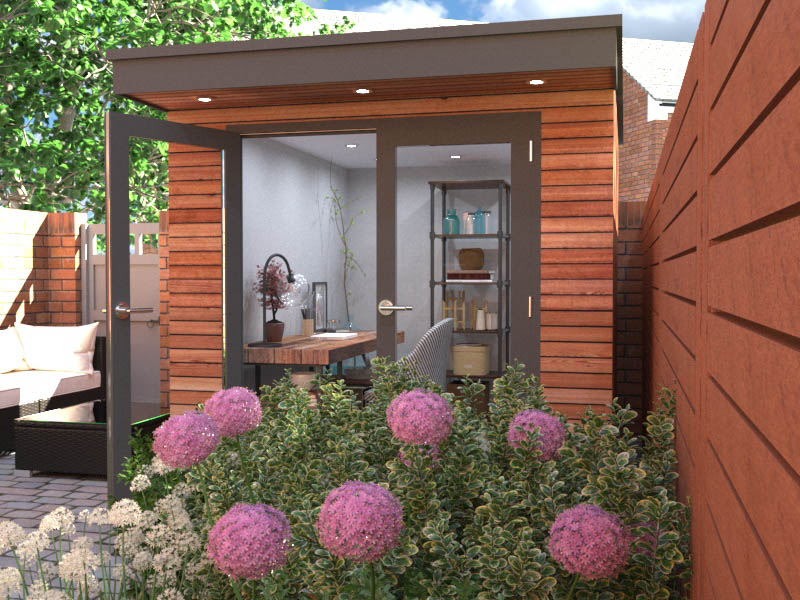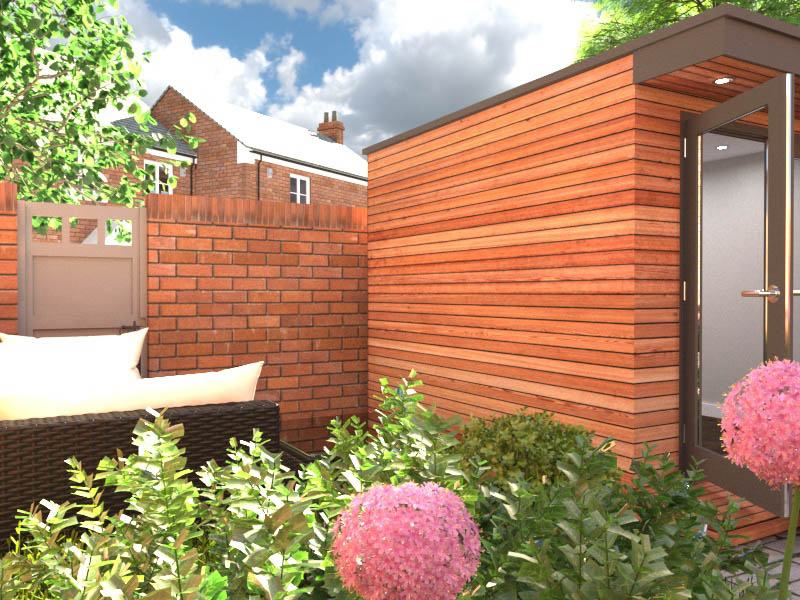To maximise space, it has become popular to position a garden office tight to the boundaries of the garden. And while this is a wise decision, particularly if you have a small garden, it can make accessing the sides of your office to maintain them difficult.
How close can you position a garden office to a fence
If you are building a 2.5m high garden office under the Permitted Development rules, you can position it tight the boundaries of your garden i.e. any fence, wall or hedge. If you want to build a taller garden office with either a mono or dual pitched roof, you would need to apply for Planning Permission to be able to position it within 2 meters of any boundary.

If you are building an office with a footprint of between 15 and 30 square meters, it will need to be positioned at least 1 meter from any boundary or otherwise be constructed with non-combustible materials, to comply with Building Regulations. In reality, this means that the cladding used on the external walls needs to have a low fire rating. Products like Cedral Weatherboarding is commonly used in these instances.
Wise material choices can be made today to save work tomorrow
If you are positioning your office tight to the fence, not leaving room for you to access the walls to maintain them. You need to think carefully about the finishes you choose so that they need little maintenance over the years.
Garden offices are commonly timber clad, and unless you choose a durable timber like Cedar or Larch, it is going to need some maintenance over the years to keep it in good condition. This is particularly the case if you opt for a painted finish, which will need recoating every three to five years.
Garden office designers know that this is a concern for many owners, so have a palette of low maintenance finishes that you can choose from for walls that are difficult to access. Firms like Booths Garden Studios, for instance, use a mix of coated metal cladding and UPVC meaning their offices can be positioned tight to a fence with no need to access the sides for maintenance.
Other firms make use of materials like composite wood – made by mixing wood fibres with polymers and coloured cement based boards, both of which maintain their appearance with no ongoing maintenance.
We are starting to see other durable materials like rubber membranes being used on walls that are difficult access.
Why spend on expensive cladding if it is not going to be seen
Positioning your garden office tight to the fence might be a wise decision from a space perspective, but it could also save you money. Many garden office designers will offer the option of mixing and matching cladding finishes. This can allow you to pick an expensive cladding like Cedar for the sides of the office that are going to be visible, and something cheaper, yet still durable like Thermowood on the sides which are not going to be seen.
It’s worth asking your garden office designer if this is something they offer.

So, with wise material choices, it won’t be a problem that you can’t get down the sides of your garden office to maintain them.
Suggested further reading:
- Why are garden offices built in wood
- Cedar garden office
- Explore the work of more than one supplier
- Talk to your neighbours

